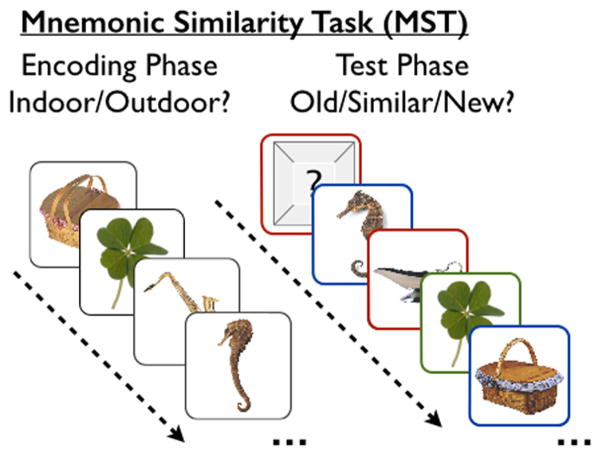Figure 1.
The Mnemonic Similarity Task (MST) typically consists of two phases: an incidental-encoding phase, followed by a surprise recognition test with a three-choice response. Importantly, the test consists of three stimulus types: exact repetitions of earlier items (outlined in green), lures that are similar but not identical to earlier items (outlined in blue), and novel foils (outlined in red). The colored outlines are for illustrative purposes only and were not present in the actual experiment.

